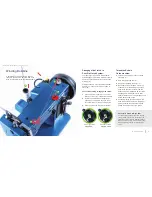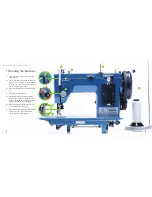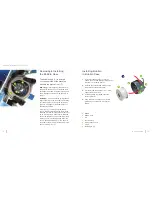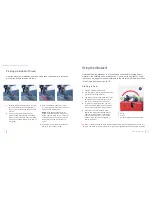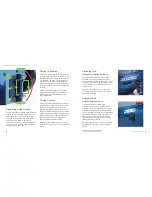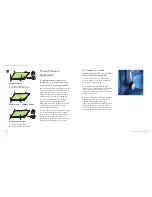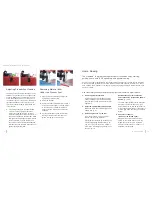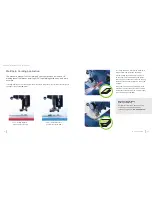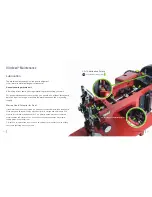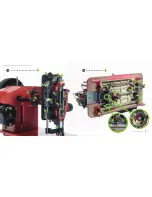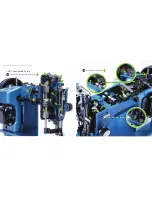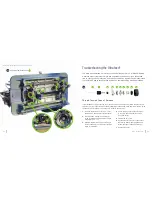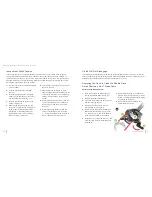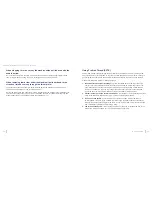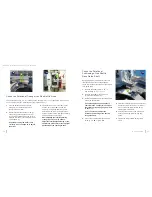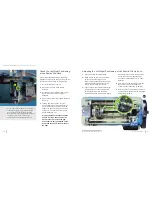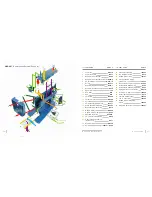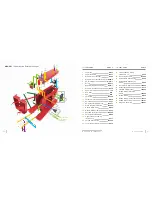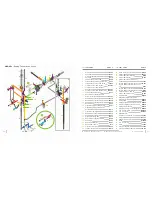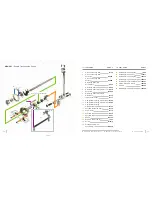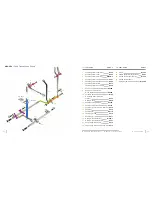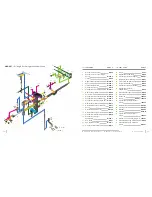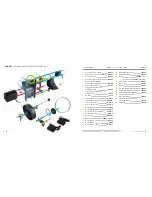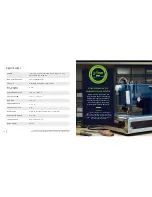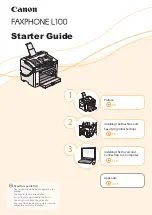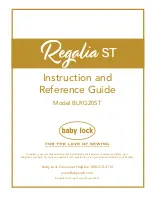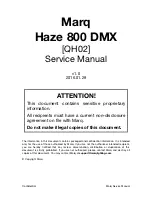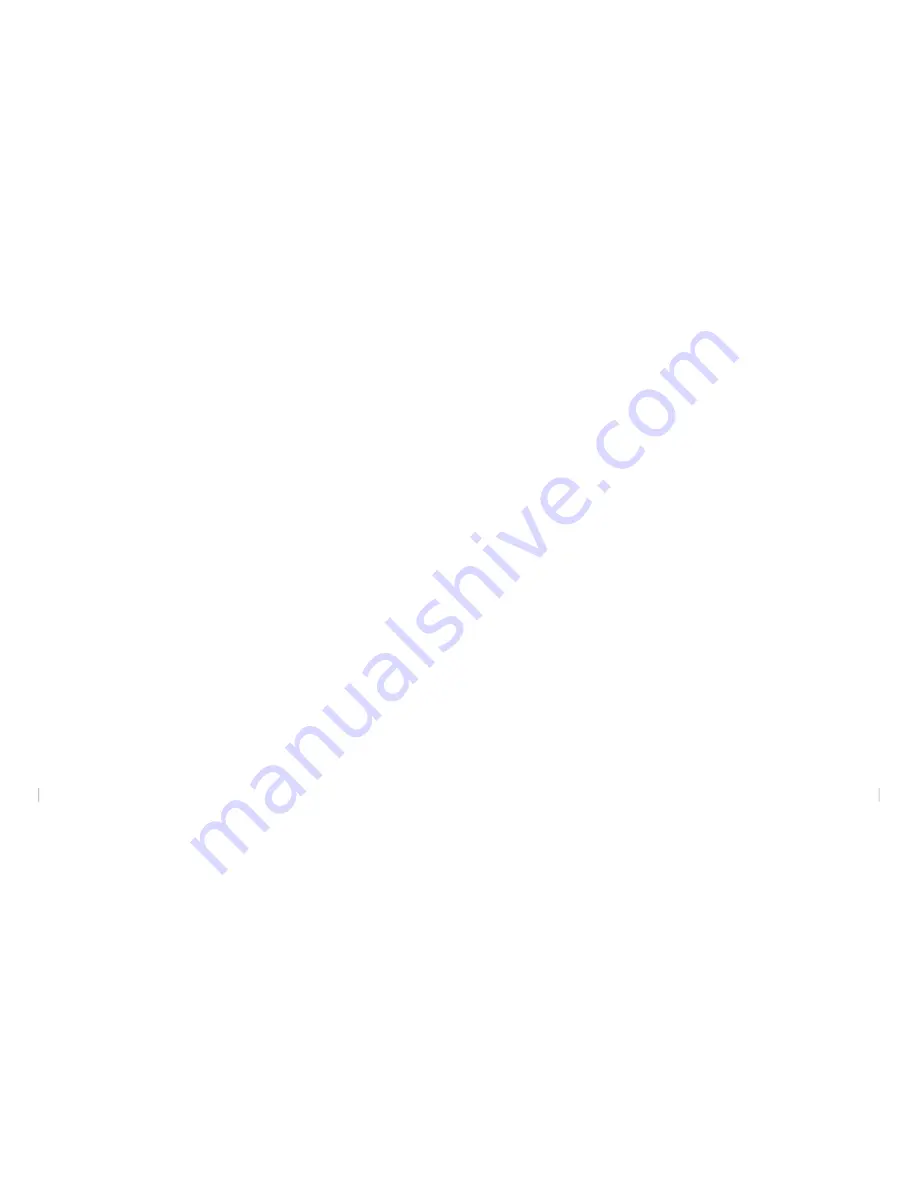
There are thread loops on the underside of the fabric:
A tangle on the bottom side of the fabric means there is not enough upper tension.
More than likely, the thread is not being pulled snugly between the tension disks
(p. 28,
35
E
&
F
) on the upper tension assembly or is not between them at all.
1.
Lift the presser foot (to push the two tension disks apart) (p. 12,
13
)
2.
Firmly pull the thread against the center shaft between the disks.
3.
Drop the presser foot. The disks should close on the thread creating plenty of tension.
Gently pull on the thread to feel the tension.
4.
If this did not solve the problem, pull the cover knob off the upper tension assembly and turn
the knob found underneath to the point where its outer surface is flush with the end of the
tension post. Then repeat steps 1–3.
Thread loops could also be caused by a burr on the retaining ring cap spring
(p. 32,
37
B
). Remove any burrs by polishing them with emery paper or a fine file. If badly
damaged, replace with a new retaining ring cap spring (#1603).
Thread pulls out of the needle eye when starting to sew:
Confirm that the needle eye is threaded from left to right (p. 7,
6
H
&
I
). Then pull out a longer
thread tail and trap it with your finger. Release the thread tail after the first few stitches.
A rat’s nest forms in the first few inches of sewing and then clears up:
Eliminate this formation by trapping the thread tails from the needle and the bobbin as you start
to sew.
Thread Issues
Thread is shredding, balling or breaking:
There are a number of causes for breaking thread. Start with Step 1 and stop as soon
as the problem is resolved.
1. Incorrectly Installed or Damaged Needle
Make sure your needle is installed correctly (p. 4,
1
&
2
). Carefully inspect the needle for
burrs, warping or damage to the point that may be causing needle deflection and shredding
the thread. Bent or damaged needles must be replaced.
2. Burred Gib Hook or Retaining Ring Cap Spring
A needle strike to the gib hook or the edge of the retaining ring cap spring’s “triangular”
opening may result in a burr which can cause the thread to snag as it pulls through
(p. 32,
37
A
&
B
). Remove any burrs by polishing them with emery paper or a fine file.
If badly damaged, replace with a new retaining ring cap spring (#1603).
3. Incompatible Needle Size & Thread Weight
If the thread is too thick for the needle it will not pass through the needle eye and form a
loop and will instead ball at the needle. Check the compatibility of the needle size and thread
weight (p. 2).
4. Machine Has Gone Out of Timing
If the machine is out of timing it may cause the gib hook point to cut or shred the thread.
To reset the timing on your Ultrafeed
®
, follow the steps outlined on p. 40 "Ultrafeed
®
Timing".
Ultrafeed
®
Guidebook: Troubleshooting the Ultrafeed®
34
33
www.sailrite.com

